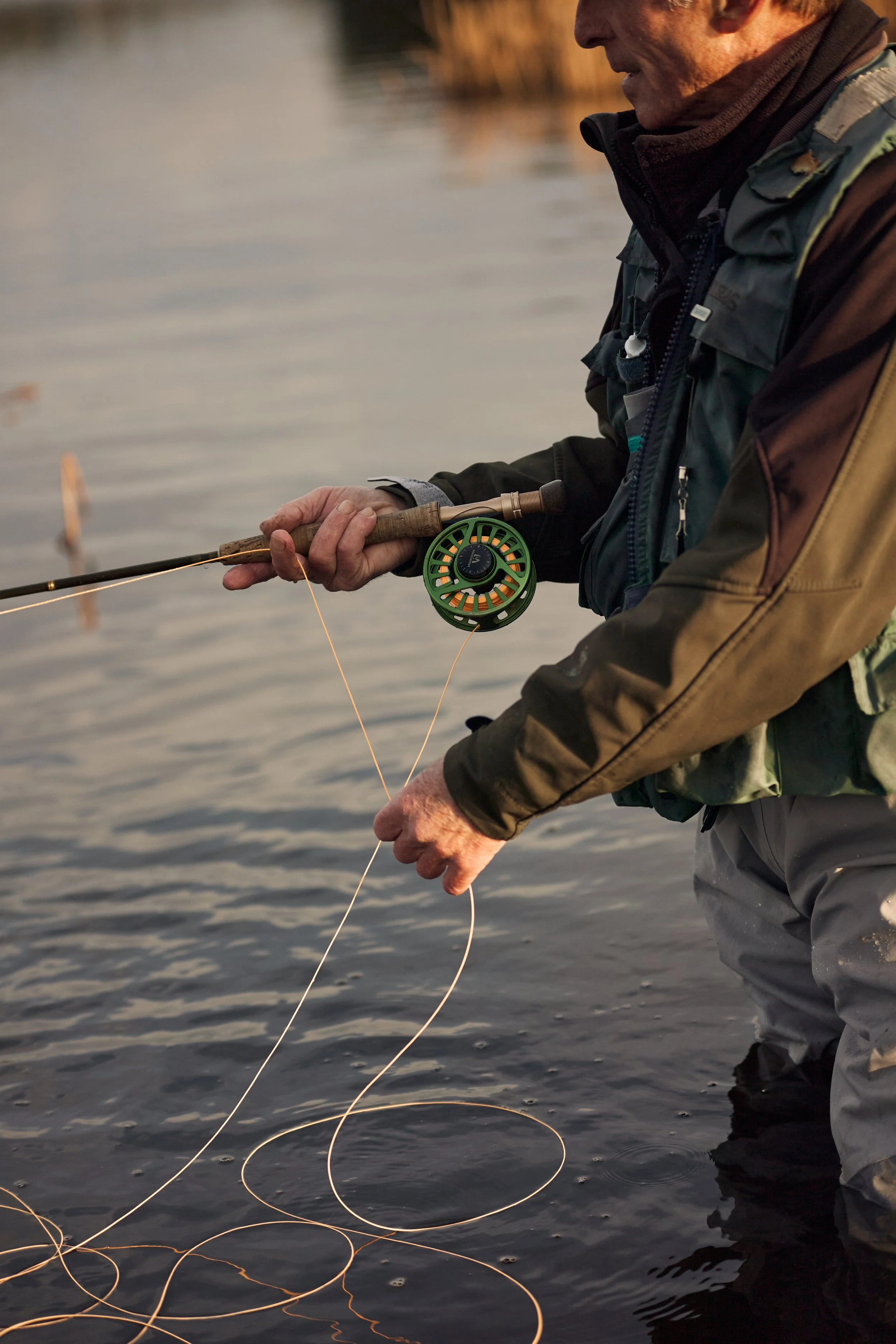
FLY FISHING
Dive into adventure at Tasmania’s preeminent private fly fishing destination.
Currawong Lakes offers a premium fly fishing experience across three breathtaking freshwater lakes. Thriving populations of wild Brown and Rainbow Trout, and exceptional hatches of insect life, create a thrilling challenge for novice and experienced anglers alike.
Connect to the wild on a guided fishing tour, or dare to venture out alone, armed with daily fish and insect guidance from our in-house fly fishing guide. With total freedom to explore, fly fishing at Currawong Lakes is the ultimate outdoor adventure.
-

HALF DAY guided
For those after a shorter lesson before jumping straight into the best fishing spots or anglers who would like a more dedicated session learning techniques and skills, our ½ day guided experience is the ideal starting point. Includes equipment and expert tuition.
-

3/4 or Full DAY GUIDED
Our guides have many decades of fly fishing experience, and know the lakes intimately. Make the most of their expertise with a ¾ or full day on the water, including equipment, casting tuition and lunch provisions.
-

FULL DAY ACCESS
Spend the day chasing wild Brown and Rainbow Trout on our three breathtaking freshwater lakes.
-

GEAR HIRE
Arm yourself with the tools of the trade - our on-site gear hire includes rods, reels, waders, vest and net.
-

DRIFT BOAT HIRE
Our beautiful Montana drift boat takes you into the heart of the lakes for an on-water fly fishing experience.
-

FLY TYING WORKSHOP
Learn to tie flies under the tuition of our Master Fly Fisher - a workshop for social and corporate groups.
-
Our premier fly fishing experience is available on the property’s three breathtaking freshwater lakes.
Currawong Lake
Our namesake is the largest lake on the property, offering two distinct habitats for true trophy fish. Long and narrow, one shore is characterised by tussocky paddock, while the other is protected by native forest, with wild Brown Trout tailing the edges and shallows.
Long Marsh Lake
Boasting 32 acres of freshwater, Long Marsh Lake accommodates the highest self-sustaining population of fish on the property. Prolific shoreline weed growth hosts millions of midges, mayflies and damsels, creating an environment ripe for the angler.
Lake Macquarie
The smallest lake on the property, Lake Macquarie enjoys protection from the wind and regular glass-out conditions. Large fish are clearly visible as they patrol the deeper sections of the lake, well within casting range for the dry fly purist.
At Currawong Lakes, we are committed to preserving the natural beauty and balance of our unique environment. To protect our fish and ecosystem, we encourage sustainable fishing practices, and kindly request that only fly fishing is practised - no lures, please.
-
Our private fishery hosts a vast diversity of insect life, making Currawong Lakes a year-round fly fishing destination.
Late Winter and Early Spring
Cruising wild Brown and Rainbow Trout are found at the ripple lines on the lee shores, taking pupae and adult midges. This season offers some of the most exciting evening fly fishing of the year, with large Brown trout running in the gloom of twilight.
Late Spring and Early Summer
Warming water temperatures bring trout into the shallows, where a careful approach will land a catch on nymphs and small wet flies. The afternoon hours see jumping trout on the lee shores of the lakes, with quick casts and a stealthy approach paying off for the fly fisher. Later in the evening, a heavier tippet on the dam faces and timber-lined shores is a recipe for landing trophies.
Late Summer and Autumn
Late summer sees the trout’s appetite for surface food well entrenched, and is widely regarded as the ultimate fly fishing season. The electric blue, red and sometimes green damselfly brings out the fish’s ambush hunting instinct, requiring quick, close and accurate casting. Autumn’s cooler temperatures see the greatest range of fish of all sizes feeding from the surface, suiting lightweight rods and finer tippets.
MEET THE GUIDE
SCOTT MURPHY
Fly Fishing Specialist
Growing up in northern Tasmania, Scott was introduced to the local rivers and fishing from a young age. His early working life included managing department stores while completing his studies in accounting, after which he founded his own bookkeeping practice, later owning and managing a variety of small businesses. A long-time bushwalker, Scott discovered a passion for fly fishing when his children were born, and founded Tasmania Fly Fishing in 2018. With many years of experience catching elusive wild trout in Currawong Lakes’ pristine waters, he and his team of House Guides are the property’s first choice of fly fishing guides for accommodation guests and day visitors.












